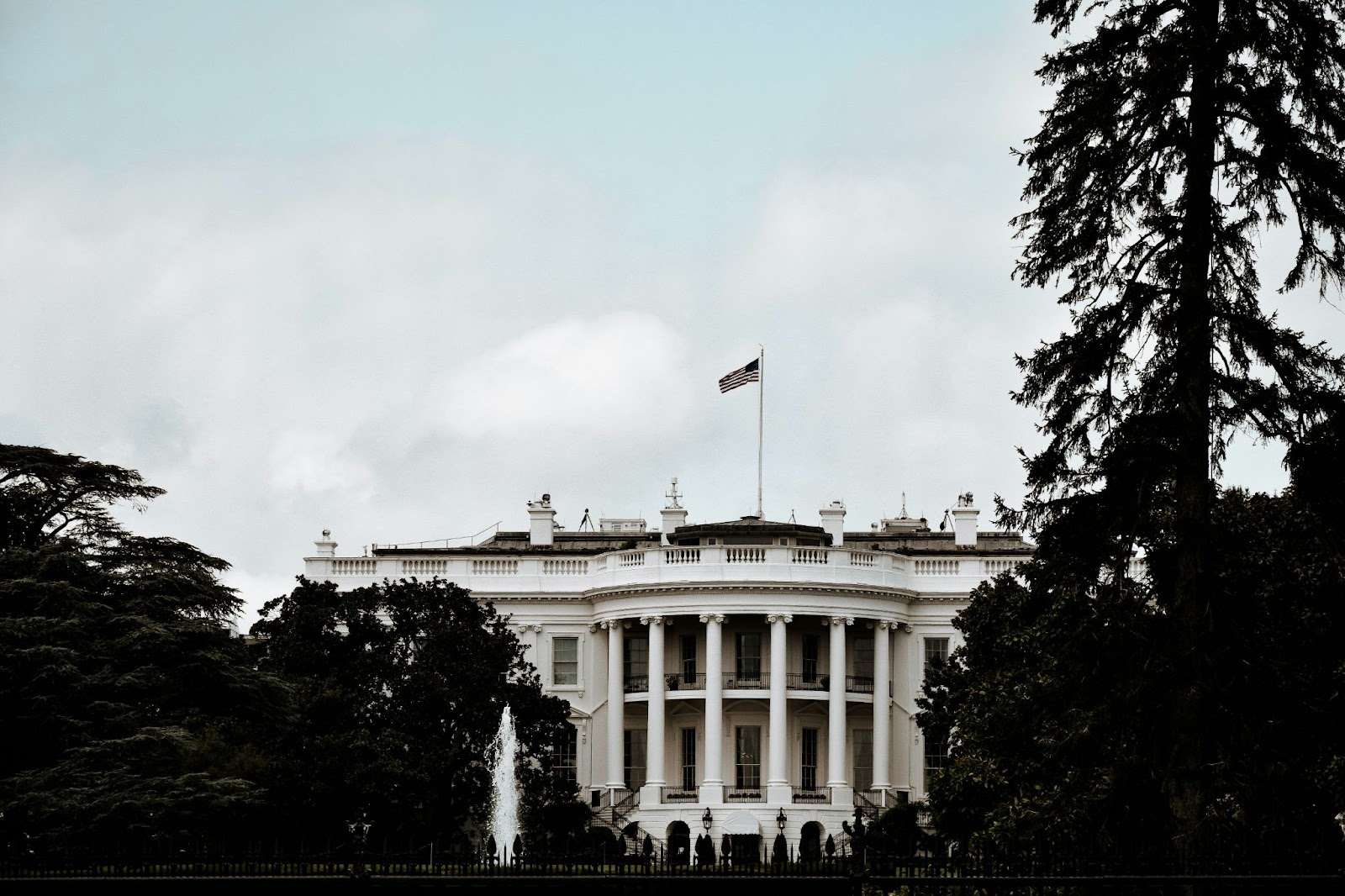Table of Contents
As the clock ticks on and the 2024 U.S. election draws closer, the marketing world braces for an unparalleled storm. This isn’t just another year. It’s an election year, marked by a whirlwind of political campaigns, heightened emotions, and an ever-evolving consumer landscape.
For marketers and brands, this is a test of agility, strategy, and foresight. Because with the right approach, the challenges of an election year can transform into opportunities for growth, engagement, and brand loyalty. Read on for a closer look at the challenges and opportunities that lie ahead, plus expert insights and actionable takeaways to help fine-tune your marketing efforts in 2024 and beyond.
Increased Competition and Inflated Ad Prices
An election cycle ushers in a deluge of political advertising, crowding out the digital and traditional media space. Backed by substantial budgets, political campaigns inflate the cost of advertising across the board, making it more expensive for brands to maintain visibility. In fact, political ad spending regularly reaches new heights in election years, with GroupM projecting a record $15.9 billion will be spent on political advertising in the United States this year — up more than 30% compared to the 2019-2020 election cycle.
What Your Brand Can Do Right Now
Counteract the competition by broadening your advertising mix. Explore alternative channels that might offer more cost-effective solutions and less of a need to vie for attention. Whether it’s tapping into emerging social platforms, investing in influencer partnerships, or embracing content marketing, diversifying your approach can help maintain visibility without escalating costs.
For example, consider a media network like Industry Dive. Here, political campaign ads are a rare occurrence — a circumstance that decreases competition and costs in comparison to other advertising platforms that will be overrun as the election draws closer. What’s more, Industry Dive’s editorial standards ensure their journalism is impartial, creating an environment of brand safety where your advertisements won’t show up in a political context that doesn’t align with your brand values.
Related Reading: 6 Lead-Gen Tactics that Work for 2024
Limited Inventory and Smarter Scheduling
The scarcity of advertising inventory during election years isn’t just a matter of increased costs; it’s also about the strategic placement of your ads. Prime advertising slots become battlegrounds, dominated by political campaigns eager to capture the electorate’s attention. This scarcity reduces the effectiveness of your ad spend and forces marketers to think outside the traditional prime-time box.
“The accelerated pace of spend and short political calendar leads to rapid innovation in the space, as platforms and publishers hone and update their offerings,” according to Mike Schneider, Partner at Bully Pulpit Interactive. “I expect innovation throughout this election cycle to be focused on the rise of AI, cross-screen ad coordination, and sophisticated ad targeting.”
What Your Brand Can Do Right Now
Be smart about scheduling your content and advertising. Leverage data analytics and consult network-based experts to identify optimal times for placements, focusing on off-peak moments when your audience is most engaged yet competition is lower. This can ensure that your ads reach your target without the premium price tag.
Related Reading: 8 Predictions for 2024 as Marketing Seeks a New Normal
Changing Consumer Attitudes and Behavior
Election years are emotionally charged, and political discourse has the potential to significantly influence consumer attitudes towards brands and their messaging.
“Two of the world’s largest democracies are going to have presidential elections this year; America and India,” says Tina Beaty, Chief Brand & Marketing Officer at SHRM. “That’s a huge impact to the world’s population, to how people show up and how they feel. With the backdrop of elections, increasing global tension, and growing divisiveness – we must find a way to be civil. What if we could turn 1 million toxic conversations into 1 million civil conversations?”
As marketers, it’s crucial to stay attuned to these shifts because the key is not just to speak, but to resonate. And to do that, we have to consistently align our messaging with our audience’s needs and priorities.
💡 Related Reading: SHRM’s CMO Talks 4 Ways to Win the Content Marketing Continuum
What Your Brand Can Do Right Now
Utilize social listening tools to keep a pulse on consumer sentiments, adjusting your messaging to meet your audience where they are. This might mean adopting a more empathetic tone, addressing current events with sensitivity, or even temporarily pivoting your content strategy to better align with audience moods.
Related Reading: How to Refine Your Content Strategy with Audience Insights
Dealing with Overstimulation and Content Fatigue
With the constant barrage of election-related news and content, audiences can quickly become overwhelmed. But amidst the content fatigue, this environment can create a unique opportunity for brands to offer something different that serves as a kind of shelter from the political storm.
Consider this: “As Cannes Lions prepares to reward humor in its annual awards,” Campaign UK reports that “many industry leaders are expecting 2024 to be a year of advertising fun in which marketers can provide light-hearted diversion from global turbulence.”
What Your Brand Can Do Right Now
Craft content that provides a mental break for your audience. Inject humor where possible to cut through the election noise and foster a positive association with your brand. This might range from some fun videos for pure entertainment to educational content that’s totally unrelated to the political sphere. The goal is to become a haven for your audience, so they can relax and enjoy a moment of respite.
Related Reading: ‘We’re Back’: Humor, Optimism Make a Big Return in Super Bowl LVI Ads
Brand Safety in a Politicized Environment
In a highly politicized era that’s coinciding with the explosion of AI, the risk of your content appearing next to controversial, false, or offensive material is heightened. Such associations, even if unintentional, can tarnish your brand’s reputation and alienate your audience.
“Avoid the most toxic environments,” advises Mathew Larson, VP of Media and Connection Strategy at Collective Measures. “While all platforms carry a risk of negative juxtaposition, X will remain the center of political conversation and may become even less brand safe.”
What Your Brand Can Do Right Now
Be platform-aware and implement comprehensive brand safety measures. Work closely with advertising platforms to set strict parameters around where and how your content is displayed, so it only shows up in a context that aligns with your brand and its values. Another idea? Larson adds that “video-centric platforms and less conversational social experiences may be safer than those designed for conversation that could easily lead to discourse.”
Related Reading: Social Media Marketing: 3 Trends Impacting the Industry Today
Balancing Political Activism and Audience Trust
Deciding whether your brand should engage in political activism is a delicate balancing act. While taking a stand can resonate with a segment of your audience, it can also alienate another.
That’s why the decision to engage in political discourse should be deliberate and strategic, reflecting a deep understanding of your brand’s position and values — as well as those of your specific audience.
Consider the various expectations different demographics may have. For Gen Z, for instance, “When we think about taking actual stands, it’s not enough to just sell your product,” says Meredith Ferguson, Managing Director at DoSomething Strategic.
It’s about using your power, influence, and platform to work to solve the world’s most pressing problems today.
But what does that balance look like for your target market?
What Your Brand Can Do Right Now
If your brand is in a position to speak out, define your political strategy and associated brand voice now. Make sure it follows a clear and consistent message that reflects your mission and identity, and take care to prepare a comprehensive strategy that considers potential backlash and how to address it. And finally, remember that to foster a constructive dialogue, all content and communication needs to be thoughtful, respectful, and inclusive.
Related Reading: Ukraine War Tests Whether Marketers Can Address Crisis Meaningfully
![]()








